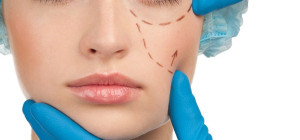 Fortunately, modern fashion allows us to wear favorite sneakers with both a classic coat and a romantic dress. And with the proper placement of accents, it will look not just good, but very beautiful. However, circumstances and events sometimes require a little black dress and stiletto shoes. And this is beautiful because every girl, dressed like that, can feel like a princess.
Fortunately, modern fashion allows us to wear favorite sneakers with both a classic coat and a romantic dress. And with the proper placement of accents, it will look not just good, but very beautiful. However, circumstances and events sometimes require a little black dress and stiletto shoes. And this is beautiful because every girl, dressed like that, can feel like a princess.
Another thing, if you seemed to be born in high heels, and therefore feel at them as comfortable as possible. Is there a health risk if you wear studs every day? Let’s try to figure it out.
Why Is Wearing Heels Bad?
The legs are the basis of our body movement and posture, so high heels can affect the whole skeleton if worn without taking them off. “Wearing heels shifts the weight of the body to the beginning of the foot, so that the knees and hips, in this case, come forward and the back needs to bend back slightly to maintain balance,” says WebMD Jacqueline Sutera, a foot specialist, and an official representative of American Podiatric Medical Association
Dr. Sophia Solomon, a podiatrist from Manhattan advises thinking of your feet as the foundation of a house. If you build two houses side by side, but one of them is on a flat foundation, and the second is on a foundation with an uneven base, at first they will look the same. But, over time, a house built on an uneven foundation will begin to crack and deform, and one day all this will lead to consequences that are not reversible. Below are five problems that the body faces when we wear heels.
Legs
Heels do not allow the foot to function properly. As a result, all this threatens with diseases of the joints in the bones of the foot. Hammer-like deformation of the fingers, scars, protruding bones, ingrown nails, and neuroma. In other words, any of the problems with the foot that you can only imagine.
Achilles tendon
If you wear high heels daily, this can reduce and strengthen the muscle-tendon unit that connects the ankle with the calf muscle. As a result, the movement will be hampered, even if there are no shoes on your feet at the moment.
Knees
Since heels shift weight, knees are forced to come forward to keep the body in balance. This gives them additional stress, which, because of incorrectly aligned knee joints, may increase the risk of developing arthritis. This disease, in turn, may require surgery if it becomes really serious.
Hips
The hips, like the knees, should move forward to compensate for the additional pressure on the feet. Since hips play an important role in any leg movements that you perform (be it walking, running or cycling), this can lead to pain not only in the hips but also in the buttocks and groin area. It is important to understand that the hips also control the posture so that when they fail, it can affect a variety of parts of the spine – from the tailbone to the neck.
Back
And, perhaps the most important thing, when wearing heels daily, you put your back at serious risk. While the hips and knees are pushed forward, the back, on the contrary, is bent back to maintain the body balance. And the longer you stay in this objectively uncomfortable position, the higher the likelihood of chronic back pain, cramps and ultimately arthritis.
How Often Should You Wear Heels?
Remember that even if you don’t wear your heels regularly, you still risk getting the injuries mentioned above. Another question is that it may take longer (on average from 5 to 10 years).
Wear high heels no more than once a month? You should be careful in any case. “Yes, you are less likely to get long-term damage from wearing heels. But if your muscles are not strong enough, you are overweight or you don’t put on shoes that are too large, the damage can still be extremely serious, ”warns Jacqueline Sutera.
In this case, however, there is a way to reduce the negative impact of heels on the back and legs. So, for example, doctors recommend choosing not studs, but wide steady heels, changing the height of the heel, if you need to wear shoes for several days in a row, do a foot massage and always go barefoot once a day for 20-30 minutes.
Contributed byhttps://www.footdoctorpodiatristnyc.com/







